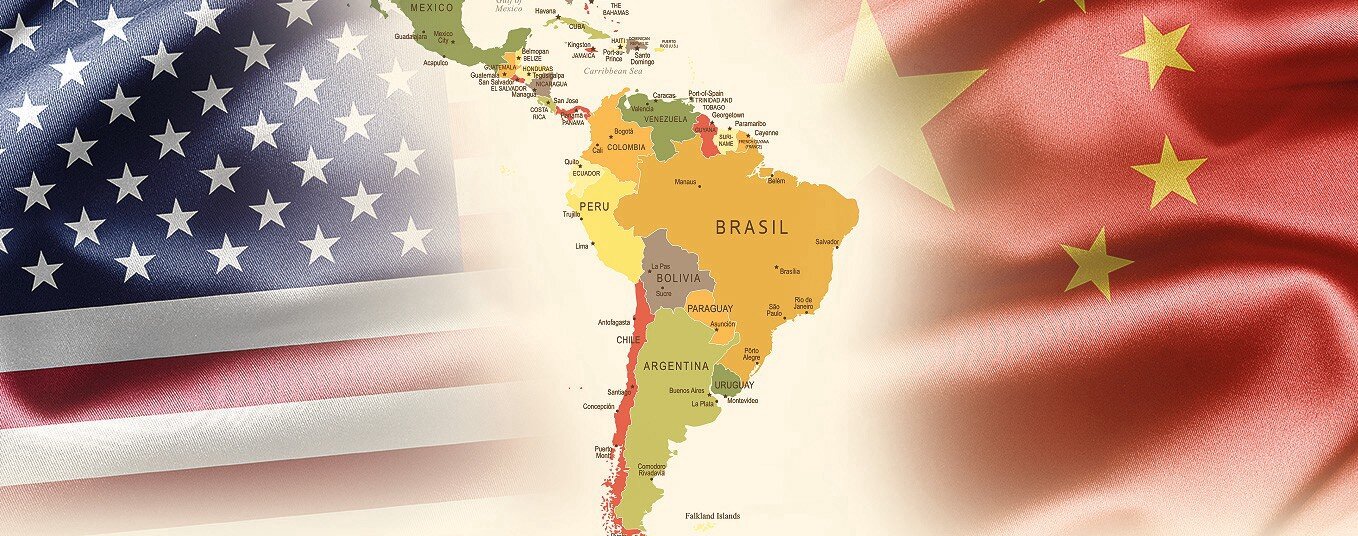Latin America used to be considered the ‘backyard’ of the United States, for almost two centuries. This was a result of the Monroe Doctrine, a US foreign policy principle introduced in 1823, meant to allegedly protect the independence of all of the countries from the Americas and secure a relatively benign sphere of influence for the US in the region. Within this framework, any European interference in domestic politics of the region would have been considered an act of aggression against the US.
After the 2001 terrorist attacks on US soil, there was a clear shift in Washington’s foreign policy towards Latin America, with a progressive retreat of the US presence in the region, in terms of political and economic influence. The US interest in Latin America started to decline significantly. The successive US administrations shifted their military and economic focus to the Middle East, Asia and other regions of the world that became more strategically vital for the US. Washington’s diplomatic and economic attention towards Latin America has notably diminished since then.
At the same time, a rising China has increased its presence in Latin America, a region with a natural economic complementarity. Latin America was revalued within China’s scope of interests since the 90s, following the ‘going out’ strategy. Many Latin American nations, including long-time strong allies of the US, started to consider Washington as one partner among many, and not necessarily the most attractive one. At least, regarding economic relations. While the US wasn’t paying too much attention, Latin America quickly became extremely important for China.
China’s approach to Latin America
Beijing certainly took advantage of US neglect towards Latin America and, more broadly, the whole Western Hemisphere, during George W. Bush and Barack Obama’s administrations. Latin America’s rich endowment of natural resources complemented China’s urgent need to secure and diversify its energy and food supply. In just a few years, China has become a key player for the region in terms of foreign trade, investment flows and financial cooperation. And this trend has only continued to deepen under Donald Trump’s term in office.
The failure of the Washington Consensus policies must also be considered to explain the decline of the United States’ influence in Latin America. The resulting economic crises in the region, after the implementation of such policies, paved the way for the emergence of left-leaning governments all across the region with negative attitudes and, in some cases, even confrontational positions towards the US.
In November 2013, Barack Obama announced that the Monroe Doctrine was officially over and that the US was trying to find new cooperation patterns with Latin America. The historic normalization of bilateral relations with Cuba, in 2014, was a flagship decision within that new foreign policy approach. Meanwhile, China kept its characteristic caution in the interactions with the region, devoid of ideological or political connotations, definitely taking advantage of the more stable scenario.
China focused on promoting comprehensive and strategic economic partnerships, as well as Free Trade Agreements (FTA), by forging strong bilateral relations with Latin American countries. Likewise, China notably increased its participation in multilateral regional organizations, promoting a cooperative and non-confrontational relation with the US in the political and economic arenas. And it really worked well for Beijing.
China presented as a “threat” for a divided region
In 2016, the prospect of China’s links with Latin American countries experienced a dramatic alteration after Trump arrived in the White House. Since then, Latin America has become another battlefield of the strategic competition between the US and China. Trump resurrected the Monroe Doctrine and declared China as a “threat” for Latin America, especially in terms of defense and security. Latin America got stuck in the middle of the clash of giants and, to make matters worse, this dispute found the region deeply divided and extremely vulnerable.
The outcome of the recent election of authorities at the Inter-American Development Bank (IDB) is a good example in that sense. Despite a vast majority of Latin American countries finally supported Trump’s controversial candidate, Mauricio Claver-Carone, the outcome of the election meant the end of a long-term tradition of Latin American presidents. Countries like Chile and Argentina decided to abstain in the voting. Same can be said about the persistent opposing positions among some Latin American countries when discussing topics such as Venezuela, at organizations like the Organization of American States (OAS).
Gloomy economic prospects for Latin America
According to several economic projections, Latin America will face an unprecedented rise of poverty and inequality due to the consequences of the pandemic, added to the effects of the endemic corruption and mismanagement, well-known characteristics of Latin American politics. In the post-pandemic world, it is clear that there is no way out for Latin America without the support of China… and the US. Any comprehensive strategy for inclusive and sustainable development for Latin America will need to be constructive in terms of engagement with both superpowers. And the more divided Latin America remain as a regional bloc, the more difficult it will be, for everyone.
There are reasons to be optimistic about the possibility of having a “pacific triangle” of relations between China, the US and Latin America. But putting aside naïve or idealistic viewpoints, I consider that might finally happen because of the US inevitable decline as a major economic power and its resulting impossibility to contain China, even if pretended. This could hopefully lead to a sort of stagnation of the US aggressive attempts to restrain China’s relations in a region that, by the way, will likely continue to lose geopolitical and economic importance. On the other hand, given the current political context, there are less reasons to be optimistic about the possibility of having better coordination among Latin American countries, at least in the near future.
How to manage the increasing US pressure about China
In the long run, the US appears to be in no position to contain China’s economic projection in Latin America. However, the US can continue to cause a lot of damage to Latin American countries with very close relations with China. Washington has many tools, like cutting financial aid via multilateral organizations, such as the IMF or the IDB, and also by imposing commercial retaliations. All this has already happened.
In that sense, Trump’s initiative Growth in the Americas, defined to counter China’s Belt and Road Initiative (BRI), should also be considered as a strategic tool for the White House to deliver rewards and punishments in the troubled backyard. So far, fourteen Latin American countries have signed agreements to join Washington’s initiative, while nineteen have also done with respect to the Chinese BRI. It is noteworthy that major Latin American countries like Mexico, Brazil and Colombia remain reluctant to join the BRI, despite having very close relations with China.
I think the key to manage the pressure and blackmailing from the US, which will certainly increase no matter who is in the White House, is to be careful when stepping on the ‘red lines’ established by US. In the case of Latin America, we are talking about at least four strategic fields of cooperation with China that are infuriating for the US: Defense and security, space cooperation, nuclear energy and 5G networks. Besides, Taiwan must be accounted as another critical issue for Washington in the region. Nine of Taiwan’s fifteen remaining diplomatic allies are located in Latin America. In the prospect of a Joe Biden’s administration, I do not foresee major changes about these red lines. At the same time, China will not stop pushing forward with its agenda.
Some countries, like Chile or Peru, have managed very well to balance between China and the US, proving that is possible to have good and beneficial relations with both of them. In fact, this competition has definitely turned into a huge opportunity for countries with smart foreign policies. On the other side, Argentina is a bad example, with shifting positions about China and US relations throughout the past years, and no strategic vision in terms of international relations. And what is worse: Argentina has already stepped on several red lines for the US, confronting openly with Washington.
To conclude, Latin American countries cannot blame China or the US for not been capable of handling their own foreign and economic policies. Of course, superpowers always take advantage of the weak. Thus, Latin America cannot remain so divided as a region, with no minimal consensus on how to deal with China and the US. In front of such a complex and unprecedented scenario, it is imperative for Latin American countries to be cooperative and extremely realistic and pragmatic. No doubt that the Latin American battlefield is already set and there is no room for miscalculations, given the critical situation of the region. Otherwise, we will pay a heavy price.
Picture credits: Ole Miss Center for Open Source Analysis







Be First to Comment